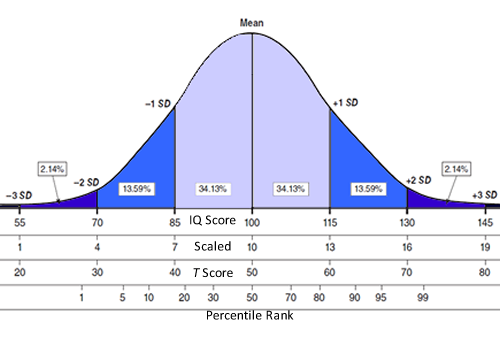NormS and Interpretting Results
What are norms and why do we use them?
Psychometric assessments are “normed” against comparison groups. Rather than looking at individual items, we look at the total score for an Norms give an appropriate comparison to compare a person's scores toindividual on a scale or test and then compare this to others.
The reason for this is that a psychological test score of 20 correct out of 40 is meaningless unless you know how others at a similar level to the individual have performed on the same test. This is particularly important when interpreting ability assessment results.
Read more about Niche Consulting norms for different tests
How do we interpret ability test results?
A number of factors should be considered when evaluating ability results:
Raw Score to Standardised Score
Most test scores form a standard distribtion (bell shaped) curve when graphed. Most psychometric test results are interpreted as a percentile result. A percentile is a ranking system that standardises a raw score against a population of others who have taken the psychometric assessment.

The ranking is out of a hundred and the percentile reports where the person would fall if ranked against 100 others. As such if a person falls at the 30th percentile they are as good as 30 out of 100; if a person falls at the 70th percentile they are better than 70 out of 100, etc. This then informs us of whether the person's score is above average, average or below average for a certain popultion (norm group).

Choice of Norm Group
It is important to consider which norm group the candidate's psychometric assessment score is being compared to. Some psychometric assessments only have managerial norms to compare to and others have broader norm groups. If we are assessing for a managerial role we ideally would like to compare the individual's assessment results to their peers and as such a managerial norm may or may not be appropriate depending on the role.
Context of the Role Requirements
Performing at an average or below average level on an assessment needs to be interpreted with caution as it may well be within the zone that is acceptable for the role. For example, if the role has some numerical work but generally this work is not done under time pressure, someone with a below average result on a numerical reasoning test may be OK given the context of the problem solving.


Considering Response Style
Where possible it is critical to take into account the candidate’s response style when interpreting a percentile score from a psychological ability test. Things to consider include how quickly they completed the ability test and their level of accuracy. Some people may prefer to go slowly through ability tests and emphasise accuracy, others may be fast and get through a lot of items but their accuracy may be poor. .
How do we interpret Personality Assessment Results?
Like ability tests, personality test results are only meaningful when compared to a norm group for the same psychometric test. The scores are again standardised and reported back in percentiles or T scores.
With personality assessments and profiles there are no right or wrong answers just as there is no right or wrong personalities, just some that are better suited to different roles.
We are measuring preferences that people have compared to others. For instance, is the person typical of the norm group on a personality attribute such as “social confidence” or do they have a stronger or less strong preference for this attribute than the norm. The strength of the preference either way may be suitable for a role or potentially less suitable, depending on the competencies and attributes related to that role.
To ensure personality results are meaningful and combined correctly they need to be interpreted by trained personnel or psychologists. Some assessment tools, such as the California Psychological Inventory and MMPI can only be by psychologists or those with advanced training in psychometrics, due to the complexity involved in understanding the tools and ensuring their correct use.
